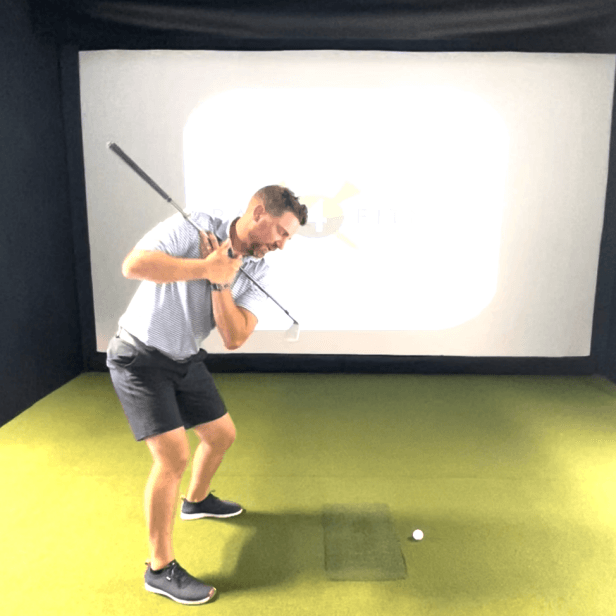There is a specific reason why professional golfers are able to generate such powerful impact conditions when striking the ball with their irons. This occurs because their hands and lower body are positioned in front of the ball as the clubhead makes contact. This positioning allows for the clubhead to slice into the turf and descend into the ball for several inches before ascending again, creating a powerful strike that results in a divot after impact.
Defending U.S. Open champion Wyndham Clark demonstrates this impact condition, with his belt buckle and hands positioned in front of the ball milliseconds before contact. While Clark’s years of golfing experience contribute to his ability to hit a 7-iron 200 yards, there is another factor at play that enables him to deloft his irons and compress the ball off the turf. This factor is known as the “lagging” action, where the clubhead trails behind the hands and body rotation through the impact zone, creating dynamic compression.
Darin Hovis, a Golf Digest Certified Fitness Trainer, emphasizes the importance of training this lagging action in the gym to improve ball-first contact and divot-taking ability. Hovis, also a skilled golfer himself, outlines a four-part workout aimed at developing the strength, stability, mobility, and coordination required to achieve this lagging action. By understanding how to leverage the ground effectively, golfers can learn to deliver their hands forward of the ball to create the desired dynamic compression and powerful impact condition.
Many amateur golfers struggle with getting their hands ahead of the ball at impact, leading to a shallow contact that lacks the dynamic compression seen in professional golfers’ iron shots. By training to lag the clubhead behind the hands through the impact zone, golfers can improve their ability to generate power and accuracy with their irons. This training process involves a combination of strength training, stability exercises, and mobility drills to develop the necessary skills for achieving the desired impact conditions.
Hovis, as one of Golf Digest’s 50 Best Fitness Trainers in America, emphasizes the role of ground leverage in creating powerful iron shots. By learning how to use the ground as a leverage post, golfers can enhance their ability to deliver the hands forward of the ball and compress the ball effectively. This technique not only increases distance with irons but also improves the consistency of ball striking and divot-taking, leading to more accurate and powerful iron shots on the course.
In conclusion, the ability to generate powerful impact conditions with iron shots is a skill that professional golfers possess through a combination of technique, strength, mobility, and coordination. By training to lag the clubhead behind the hands through the impact zone and understanding how to leverage the ground effectively, golfers can improve their ability to compress the ball off the turf and achieve ball-first contact. Through dedicated practice and training, amateur golfers can develop the skills necessary to hit their irons with power, accuracy, and consistency, leading to improved performance on the course.
